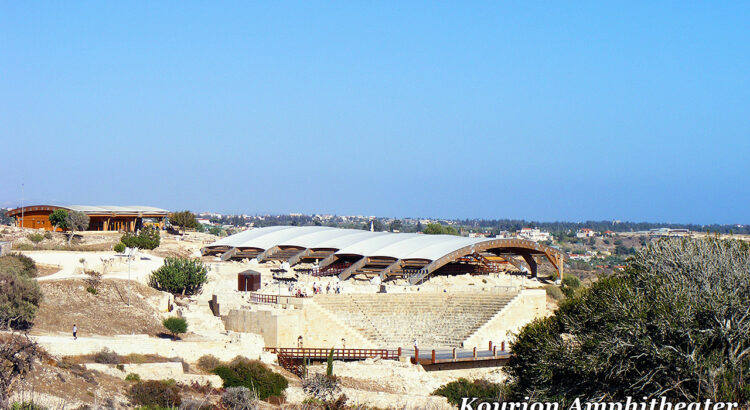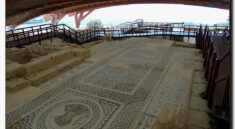“This House in place of its ancient armament of strong walls, solid iron, gleaming bronze and even adamant, has now girt itself with the much venerated symbols of Christ.”

Eustolios dedicated the entire multi-functional structure to Christ by decorating it with a variety of Christian and geometric mosaics and inscriptions. He openly declared his Christian faith at the same time Theodosius I made Christianity the religion of the Roman Empire.
Built atop the remains of an earlier Roman manor, the House of Eustolios was constructed during the latter part of the 4th century. The wealthy Eustolios returned to his native Kourion to find it still in a truly pitiful state even twenty-five years after the devastating earthquake of 365AD. Moved by the abject poverty of Kourion’s citizenry, he donated a beautiful complex of public baths adjacent to his own home, both dedicated to Christ and decorated with a variety of Christian symbols in mosaics
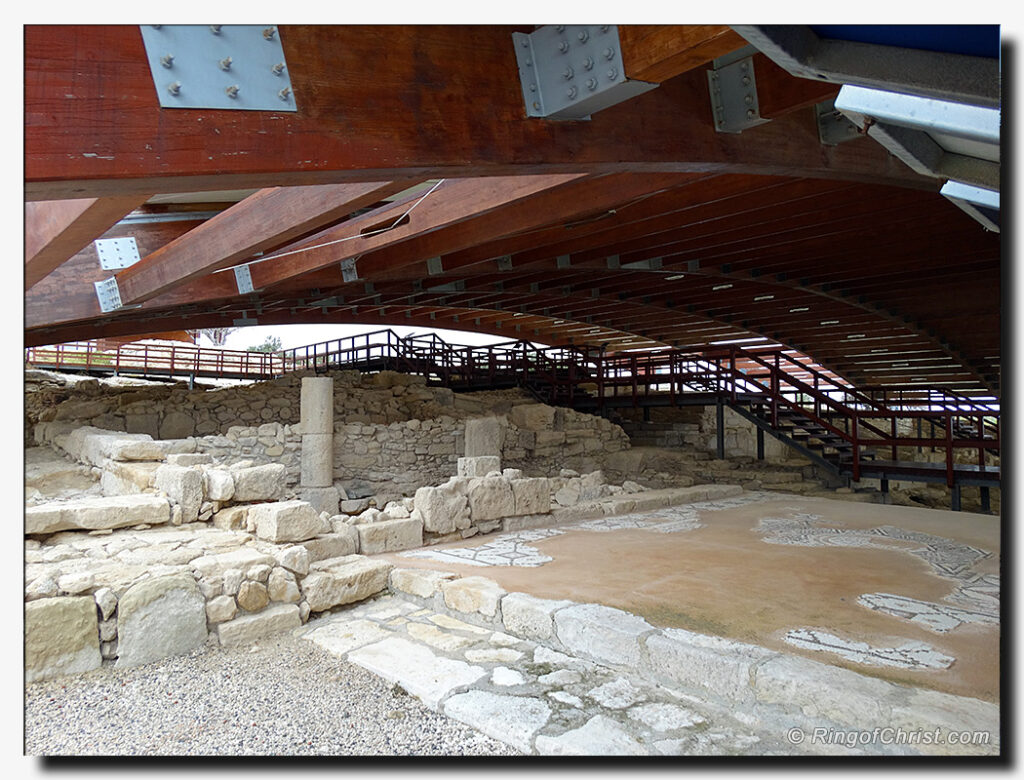
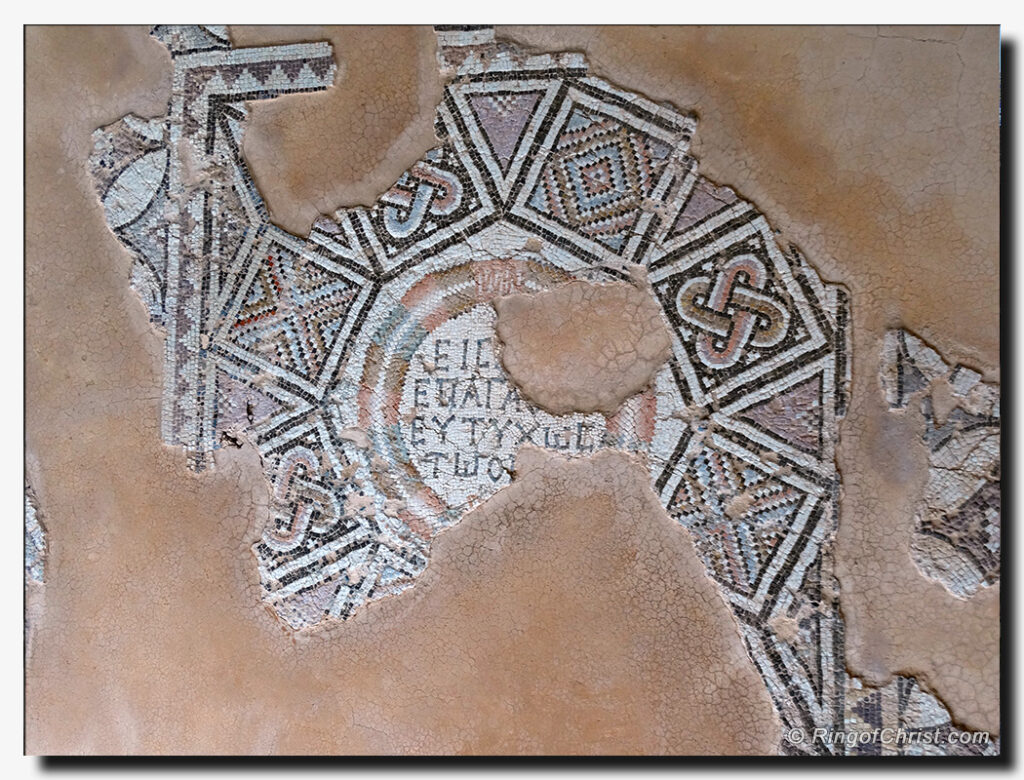
The baths and public complex served Kourion’s population for over two hundred years up until the middle of the seventh century, when it, and all of Kourion, was plundered and destroyed by the growing number of Arab raiders. The ancient city lay for a thousand years, virtually unknown until 1934 when Professors George McFadden, Bert Hodge Hill, and John Daniel led an expedition of Penn State students who began to painstakingly unearth the ruins over a period of 20 years.
Stunning views of the Mediterranean Sea from the House of Eustolios
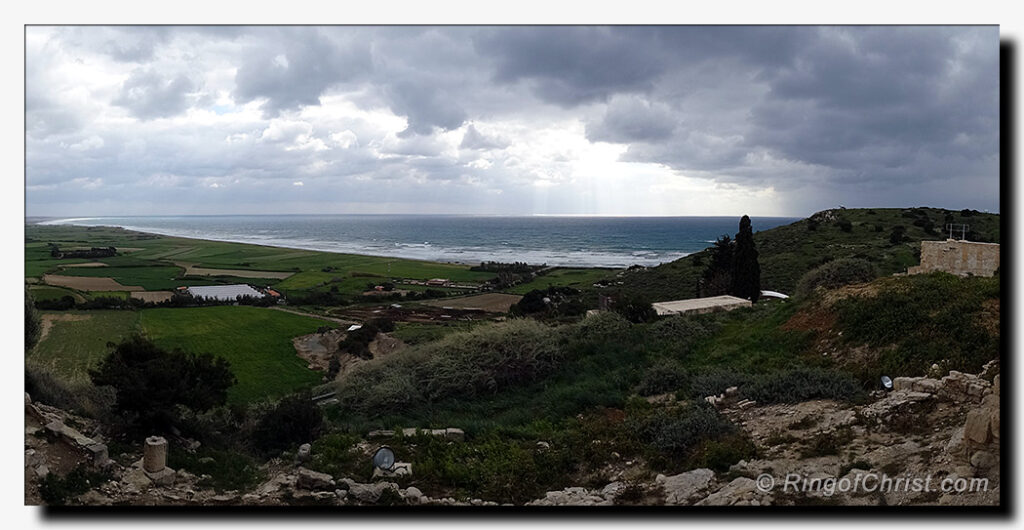
The Roman Baths at the House of Eustolios
The bath area was in the classic Roman style, having three large bath chambers—the frigidarium, caldarium, and tepidarium which were enjoyed by the patrons who readied themselves in the apodyteriums, the dressing rooms. Numerous apsidal sections constructed around the villa added semi-circular niches for privacy and softened rectangular rooms.’
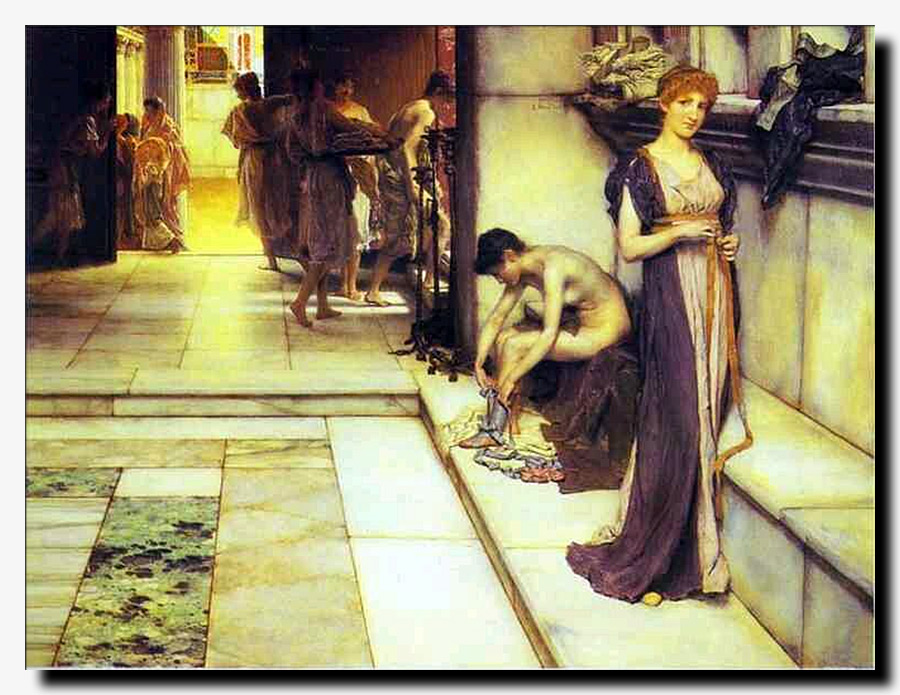
Each room served a specific purpose; the whole complex was laid out efficiently and with great care to best serve those who frequented it. The entire complex was beautifully decorated with columns and mosaics. One inscription refers to ‘fragrant halls.’
It is interesting to note that to the Romans the baths were a place for gathering, where one would ususally take one or more slaves to carry the bathing parafinalia: bathing and excerise garments, sandals, linen towels, and a grooming kit containing sensuous oils and perfumes, a sponge, and a strigel (a carved metal instrument used to scrape oil, sweat and dirt from the body.)
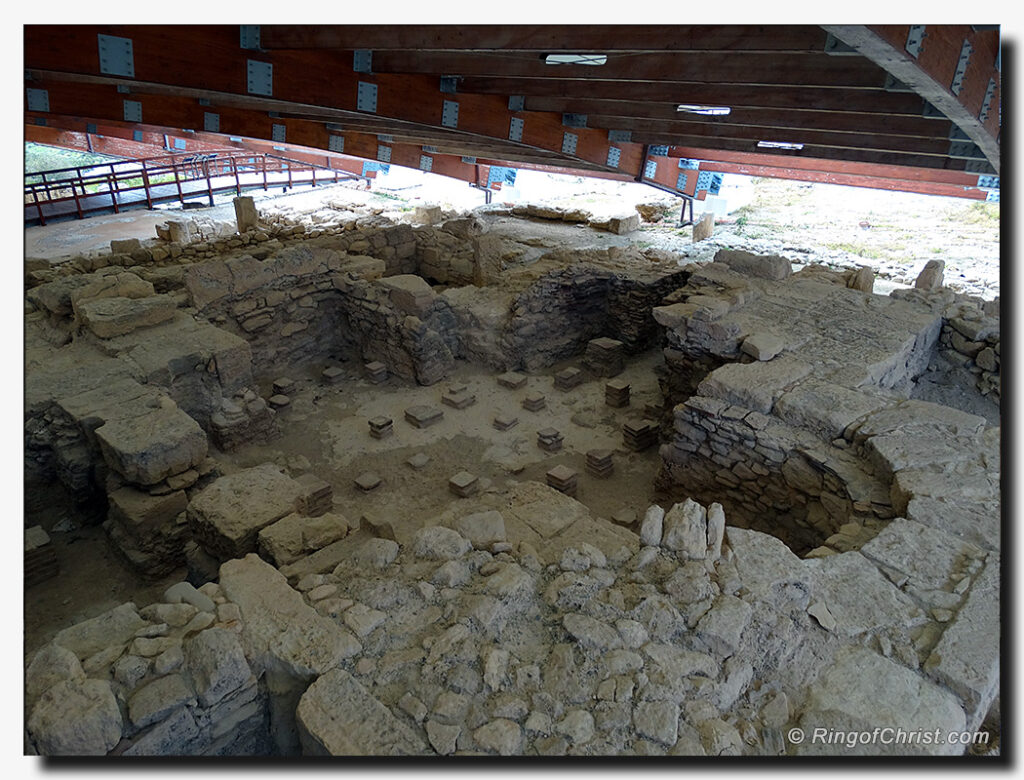
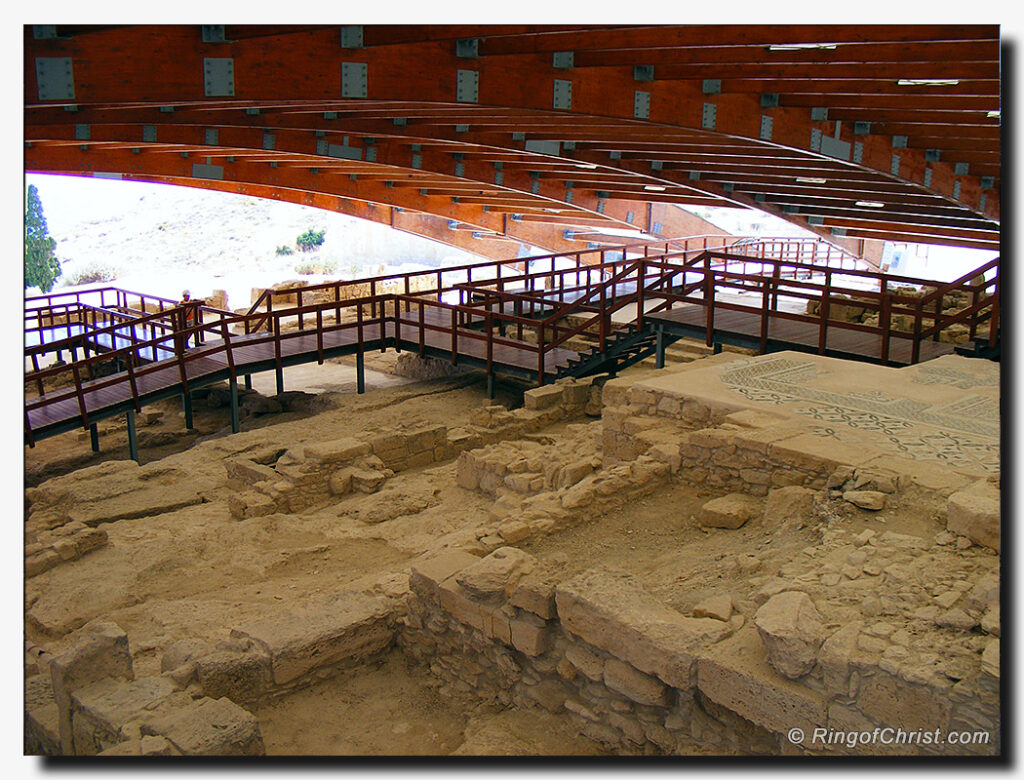
The House of Eustolios had an advanced drainage and sewage system as did other newly constructed buildings in Kourion of the late 4th Century. All of the workings were hidden away under the floors of the complex. Gray water was used in the latrines, a concept used today in environmentally friendly design.
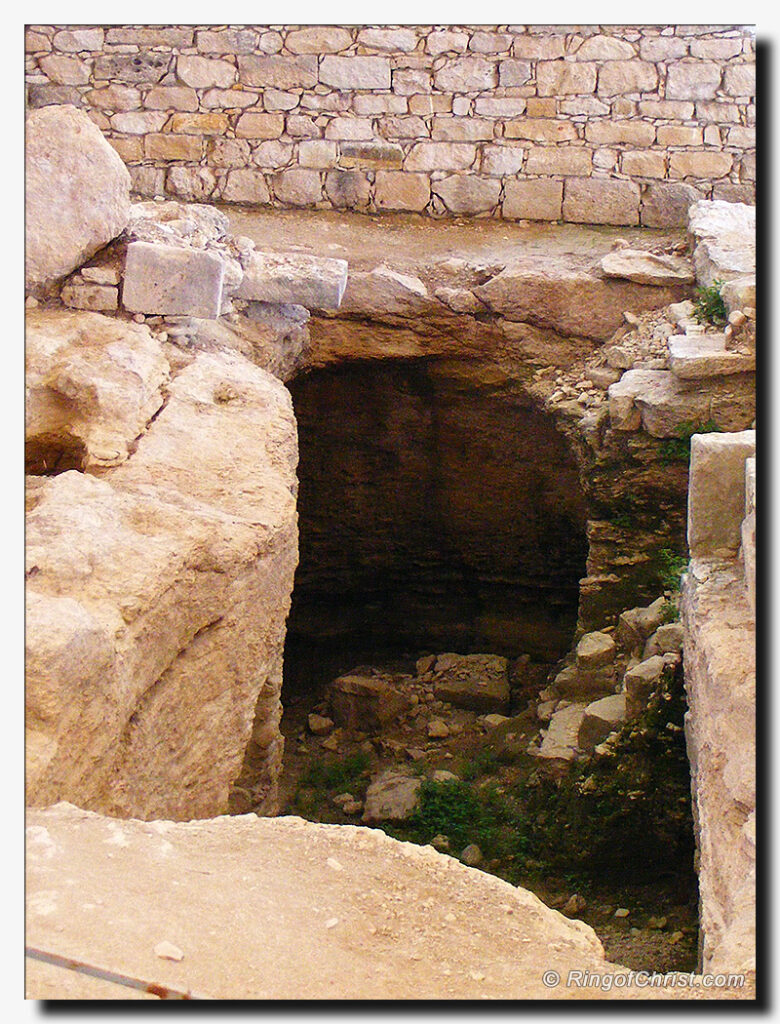
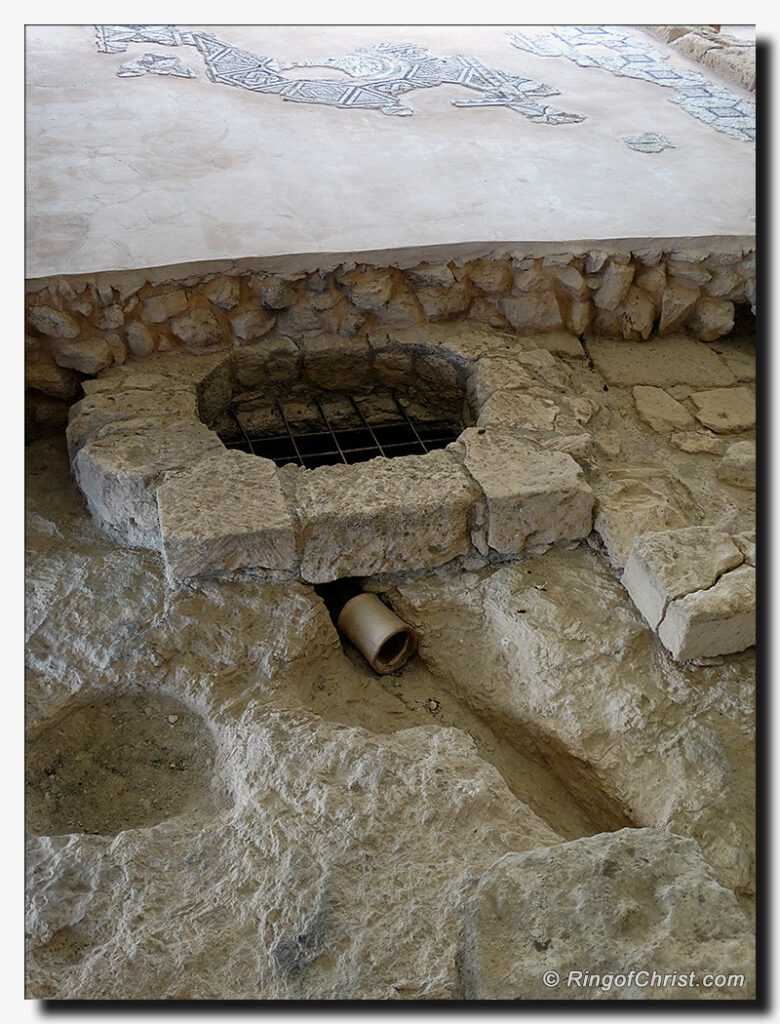
Reservoirs, cisterns, terracotta pipes and water channels are visible today from extensive excavations, but at the time of use, all would have been out of site, covered with common tiles or exquisite mosaics depending on the function of the room.
The Private Residence of Eustolios
But of course it is Eustolios’ own, private residence with its many beautifully preserved Christian mosaics which draws most visitors to this remarkable archaeological site. Aside from mosaics decked with numerous Christian symbols, the doorstep to one of the private area of Eustolios’ home has the following, clearly devoted, mosaic inscription: “The Sisters Reverence, Prudence and Piety tend the Platform and this fragrant Hall.”
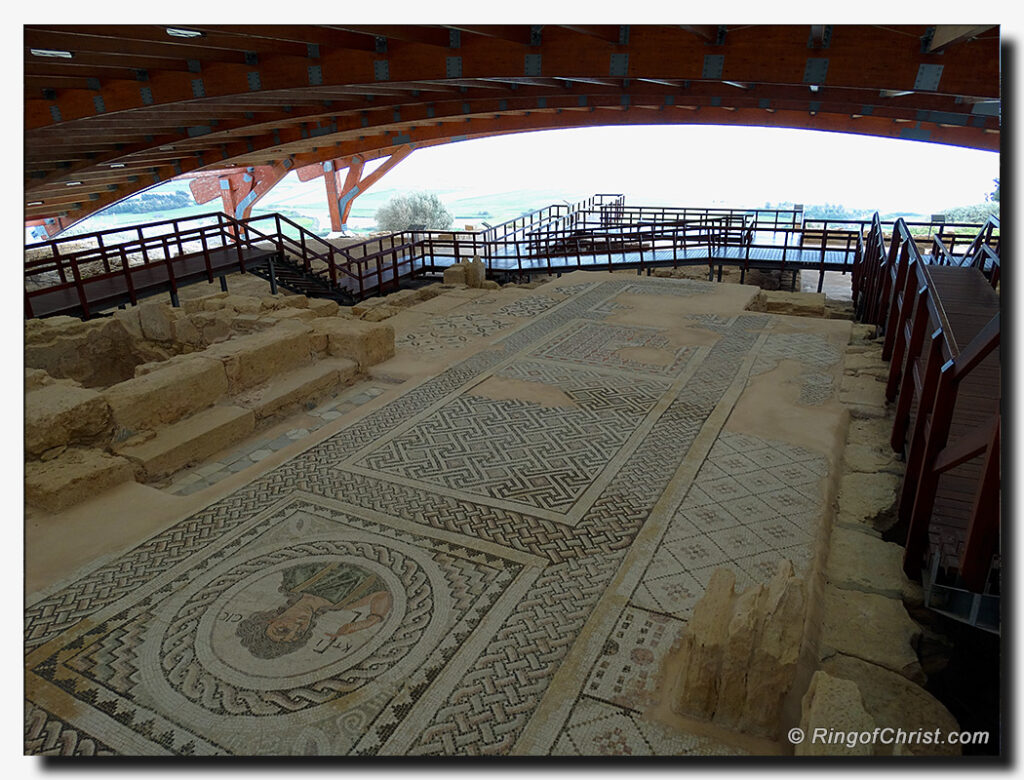
As well as the bath complex, the House of Eustolios also contained meeting and dining halls, where much business was no doubt discussed by the citizens of Kourion.
Intricate mosaic patterns covered the floors throughout and extend through the banquet and meeting halls, bathing and dressing rooms, and open courtyards. Most of the structure is terraced and would have been an luxurious structure with bathing pools, solariums, salons for relaxation, dining areas, sanitary areas, and recreational facilities. It would have offered a cool respite from the harsh, dry summer months, an oasis open for public use.
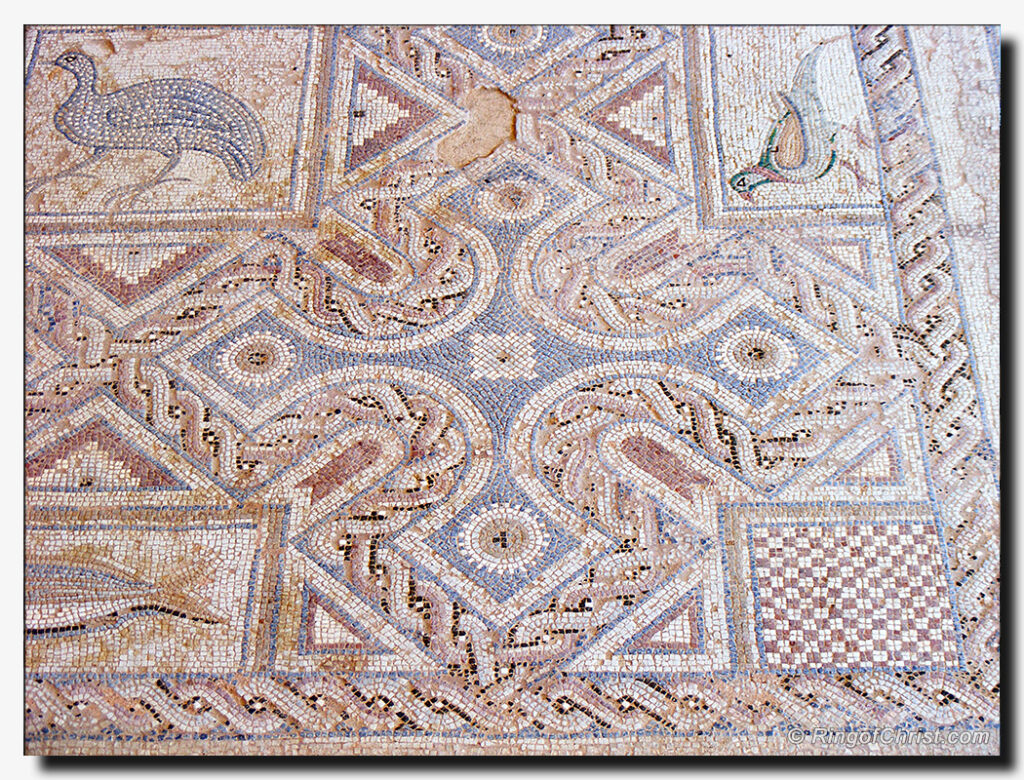
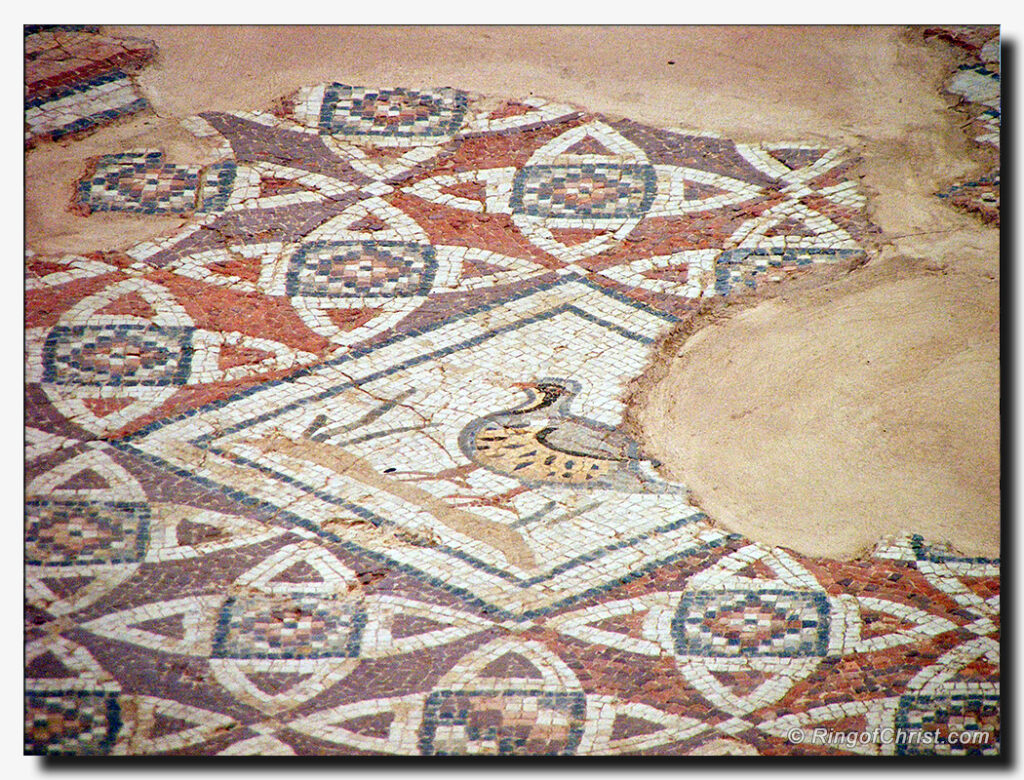

The baths and public complex continued to serve Kourion’s population up until the middle of the seventh century, when it was finally destroyed by the growing number of Arab raiders which began in this century. Along with the rest of Kourion, the House of Eustolios remained undiscovered until recent times.
